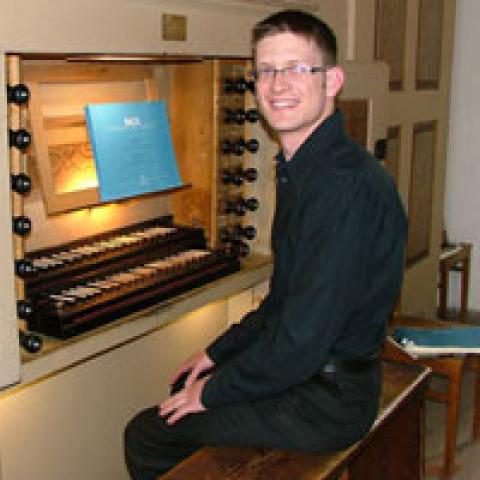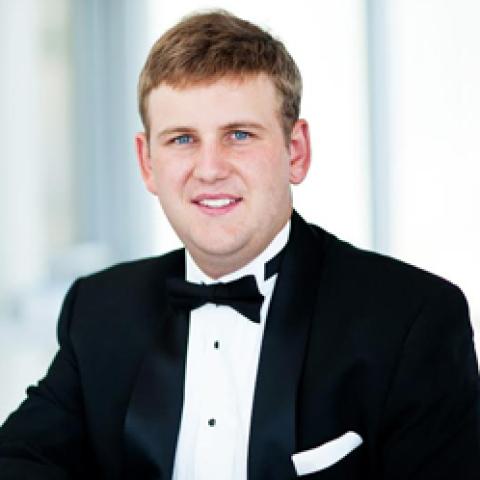OBERLIN, OHIO (July 7, 2008) — Organist Joseph (Joey) Ripka, an Artist Diploma student at the Oberlin Conservatory of Music, has won first prize at the Dublin International Organ Competition, held on June 28, 2008, at Christ Church Cathedral in Dublin, Ireland. In addition to 5,000 euros, his award includes recital engagements in Ireland, the U.K., and continental Europe.
Ripka, from Elk River, Minnesota, studies at Oberlin with Professor of Organ James David Christie. “This is one of the most prestigious … international organ competitions,” says Christie. “Joey really deserved this honor … he had the repertoire in his fingers, in his heart and soul.”
For the finals competition, Ripka and the two other finalists were required to present a 40-minute program that included a work by Olivier Messiaen, whose centenary is being celebrated this year. Ripka performed Messiaen’s Transports de Joie, J.S. Bach’s Allein Gott in der Hoh sei ehr, BWV 662, and Max Reger’s Choral Fantasy on “Wachet auf.”
The Dublin achievement caps a championship season for Ripka; he also won first prizes at the Fort Wayne National Organ Playing Competition in April, and at the Elizabeth Elftman National Organ Competition, held in March in San Marino, California. He is also the second Oberlin student to win first prize in Dublin; Balint Karosi (AD ’05 and MMus ’07) of Hungary was a laureate in 2002.
Thirty-nine organists representing 15 countries vied for the competition, with 16 being selected to compete in the quarterfinals, which commenced June 23, 2008.
Thomas Trotter of Great Britain chaired the Dublin jury, which included Hans Fagius of Sweden, David Higgs of the U.S., Margareta Hürholz of Germany, and Daniel Roth of France.
The Oberlin Conservatory of Music, founded in 1865 and situated amid the intellectual vitality of Oberlin College since 1867, is the oldest continuously operating conservatory in the United States. Renowned internationally as a professional music school of the highest caliber and pronounced a “national treasure” by the Washington Post, Oberlin’s alumni have gone on to achieve illustrious careers in all aspects of the serious music world.
Oberlin student Joseph Ripka wins First Prize at the Dublin International Organ Competition
Oberlin Conservatory of Music




